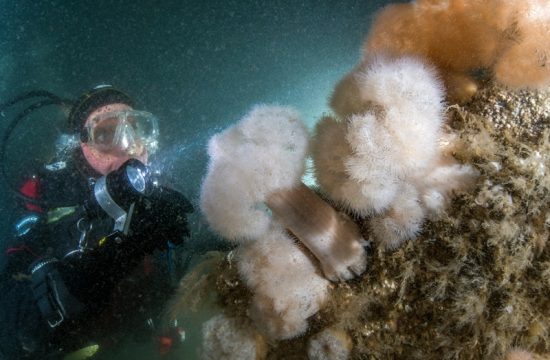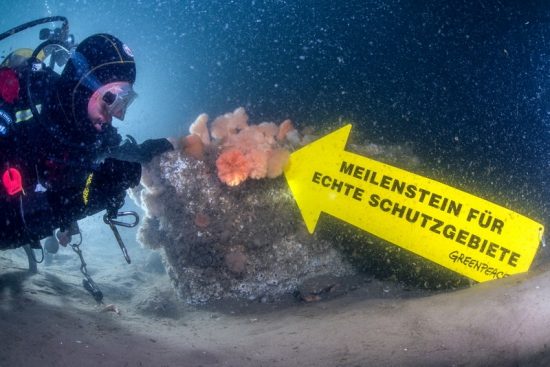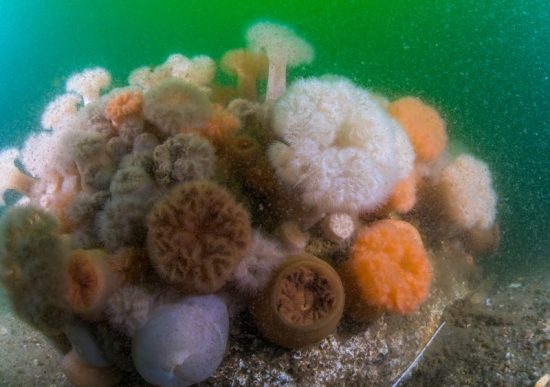





Boulders also prevent fishing activities from taking place.
The large boulders dumped into the Sylt Outer Reef in the North Sea in 2008 and 2011 by the Greenpeace organisation have now been colonised by a variety of soft corals, sea anemones, crustaceans and fish.
For the past few weeks, underwater photographers and videographers from Submaris, working with Greenpeace personnel on board the Arctic Sunrise, have been capturing footage of the Sylt Outer Reef, as part of Natura 2000, the EU-wide marine reserve network. The images that resulted prove that the stones have been effective in protecting the seafloor from bottom trawling, as well as sand and gravel mining.
Today, the stones are part of the reef, serving as habitats for a host of marine creatures like mussels, starfish and worms. “The underwater images show that sea creatures need areas where they are left to themselves,” said Greenpeace marine biologist Sandra Schöttner in German. She added that Fisheries Minister Christian Schmidt should establish large fishing-free zones where the sea could recover.
Currently, there are no specific measures taken by the federal government to safeguard the marine-protected areas of the North and Baltic Seas.
Fishing, sand and gravel mining and military manoeuvres permitted in marine reserve
Since 2007, a third of the North and Baltic Sea (including the Sylt Outer Reef) has been under protection as part of the Natura 2000 programme, due to their rare stone reefs and sandbanks with many species of fish, as well as endangered cetaceans and seabirds. Schöttner said that the fishermen also rely on a healthy marine environment to sustain healthy fish stocks in the oceans.
However, there are no restrictions imposed on human activities that are destructive to the marine environment.
Schöttner called it a scandal that very heavy nets still plough the seabed, which sand and gravel are extensively mined and military manoeuvres continue to take place. It is only in the area where Greenpeace had dropped boulders (covering almost 150 square kilometres) that no fishing activity is carried out.
The Greenpeace ship Arctic Sunrise is currently travelling under the motto: “#wellemachen – for the protection of the seas”.
 Mares
Mares 6th June 2016
6th June 2016